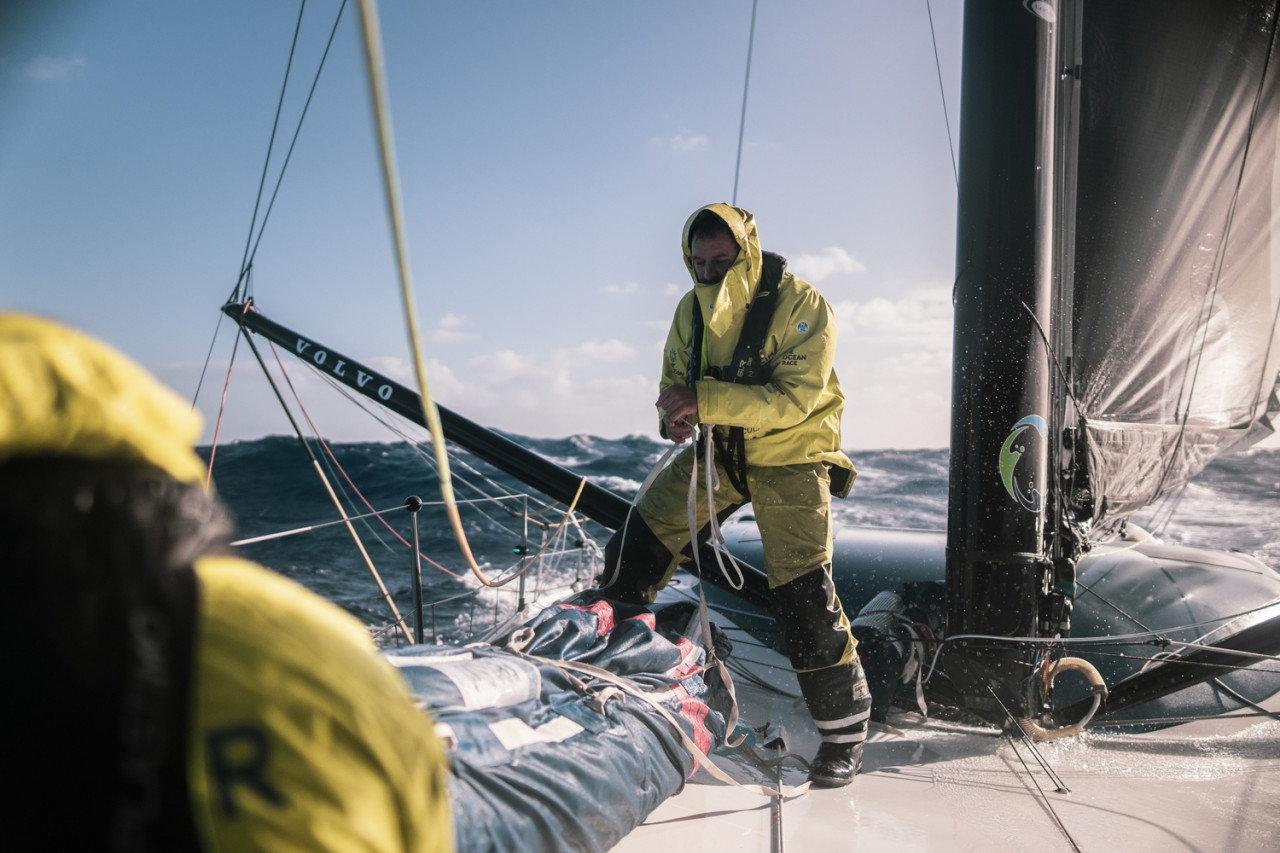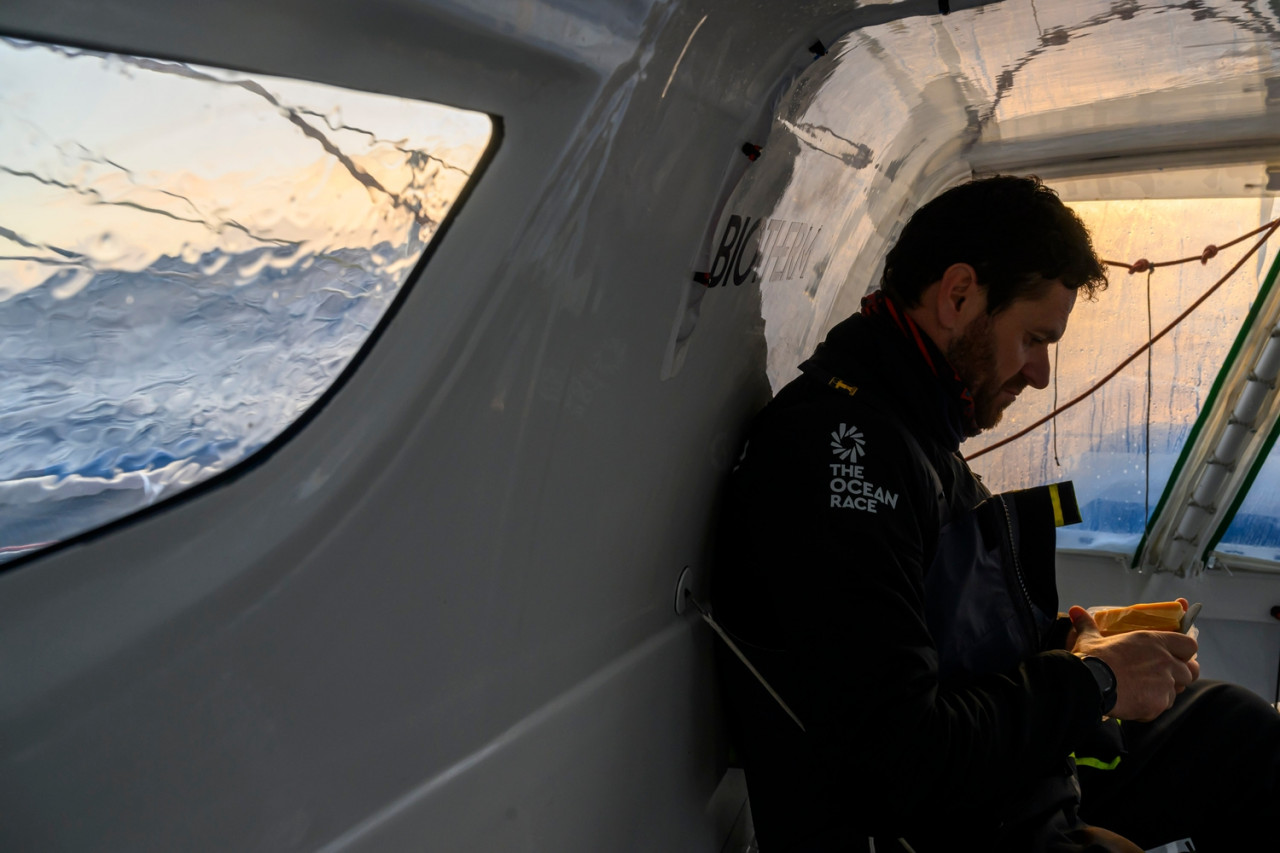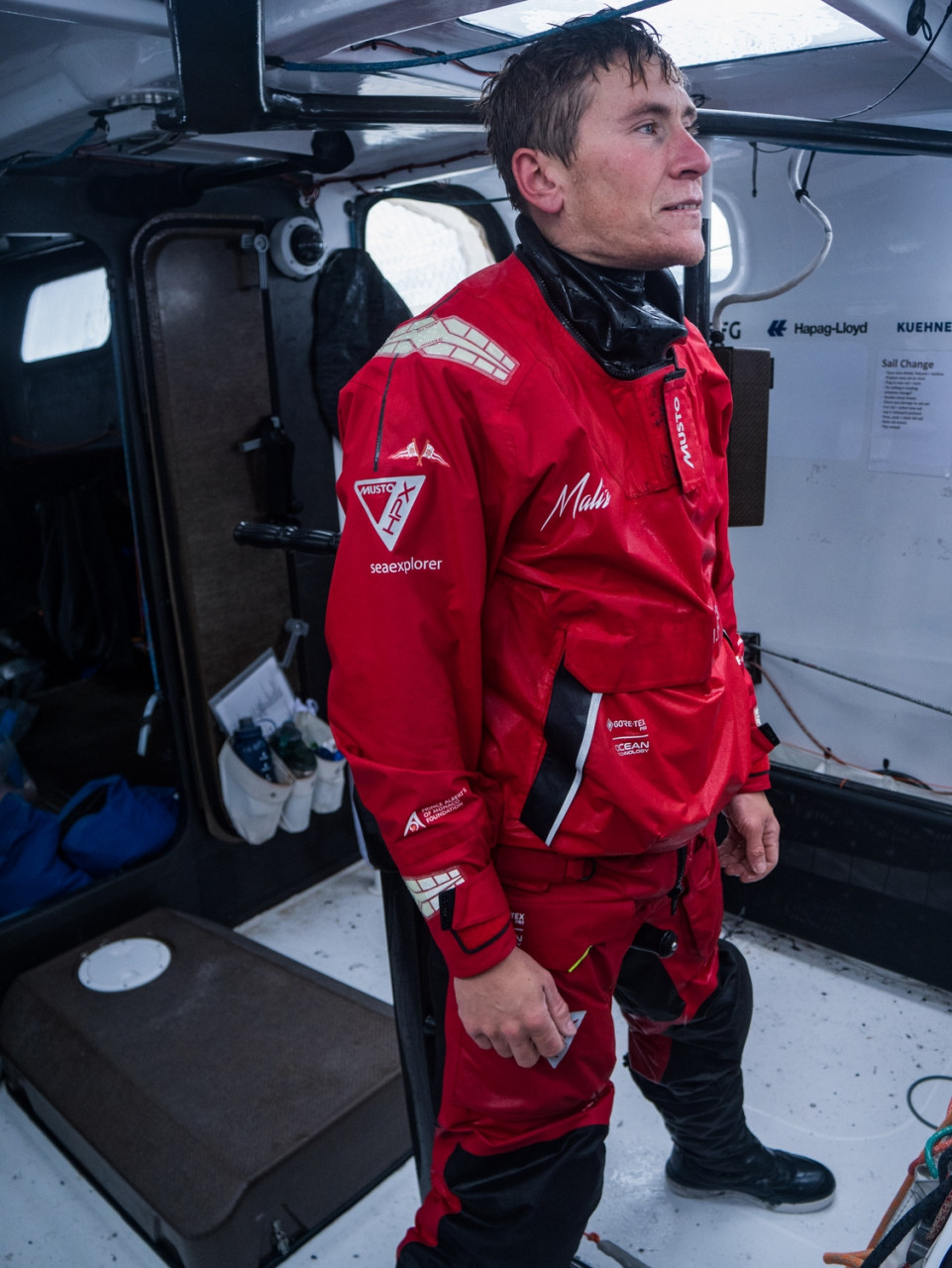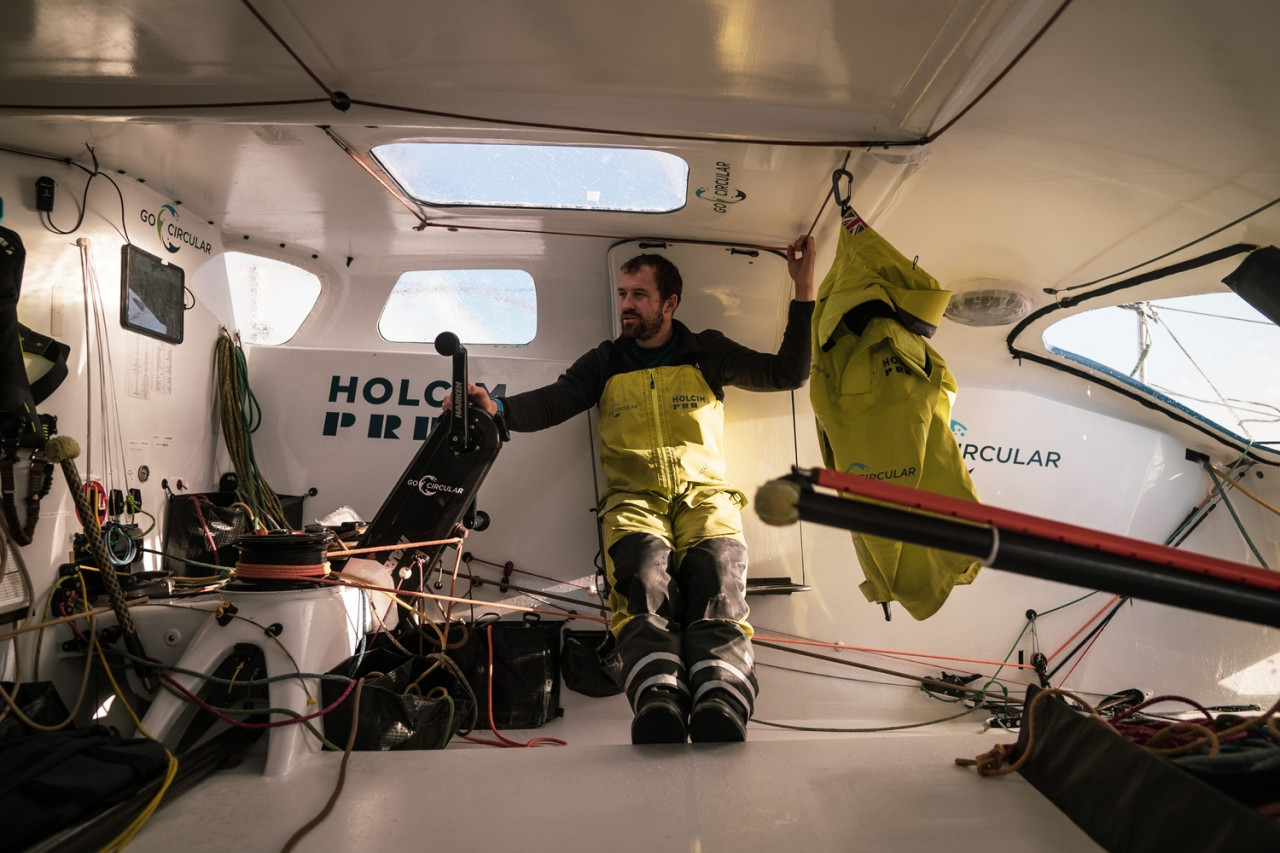Final push for the Horn

The fleet is expected to make Drake Passage and Cape Horn on Monday.
After 48 hours of building wind and seas, with gusts over 40 knots and waves approaching 7 metres, conditions are starting to moderate on Sunday with the IMOCA fleet turning south to squeeze between Cape Horn and the ice exclusion zone.
The wind is in the 18-22 knot range and the waves are 5 metres and decreasing. That's still plenty of motion on an IMOCA, making movement on board difficult, but slightly better than over the past day.
And there is now a good chance the passage of Cape Horn could be quite light and tricky in very changeable conditions.

No matter the conditions, and whether this is a first passage or a fifth or sixth, Cape Horn remains an iconic milestone in the career of an sailor.
On the race course on Sunday the fleet is diving south. Starting the day at 52-degrees south latitude, they'll need to find 56-degrees south to make it around the Horn on Monday.
11th Hour Racing Team is trailing the fleet and furthest west, while the leader, Team Malizia is the most easterly boat, 200 nautical miles closer to South America.
Amory Ross, from 11th Hour Racing Team, reports from the American boat: "For the last 48 hours we have been surrounded by towering waves and wind-blown seas far more typical of the Furious Fifties, and visually at least it finally looks like the place we all came here to see. As grueling as constant 35-45 knots of wind and the minefield of giant holes in the ocean around us can be, it’s part of what makes the Horn meaningful: you have to have earned it. 27 days is a long time in the cold south and we have had our fair share of issues to overcome, but I don’t think we have seen true 'Southern Ocean' conditions, until now."
HIs team suffered more mainsail problems, accounting for their slower pace compared to their rivals. but the team is determined to ease the boat around Cape Horn and rejoining the fight for points on the final push to Itajaí.

"We're fighting for every single mile and we need to make sure that we gain all that we can at the moment,"said Will Harris on Team Malizia. "It's not about pushing the boat past its limit. It's about working it hard in the conditions we have - being active on the pilot and on the trimming... We have to keep working it."
"It's nice and sunny, the boat is in one piece and we're in first place, so there is a lot of positives to think about today."
It's been a bit more harrowing on board Biotherm as Sam Davies explains.
"We had some really squally conditions with over 40 knots. Going down a big wave, the boat spun out, and gybed - twice - and as a result we damaged one of the traveller cars for the mainsheet which is what we had repaired at the start in Cape Town. We also broke one of the battens in the mainsail. A traveller car also caught on the tent of the cockpit and ripped the bottom joint away so we have more water coming in and lots of cold air, so it's freezing."
"We will need to repair the batten and the traveller car as soon as the sea state decreases. It was proper Southern Ocean conditions - 40 knots of wind, 8 metre breaking waves. It's just about the limit of what's acceptable in an IMOCA and way beyond what is comfortable. But the boats are designed for this and luckily it's been short-lived..."

Finding that balance between pushing and preserving has been the focus on Team Holcim PRB as well.
"It's been stressful," said Sam Goodchild. "Trying to find the limit of what the boat is capable of doing. We don't want to break the boat but obviously we want to go fast as we're racing and trying to find that balance is easier said than done."
As conditions moderate, there will be time to make the necessary repairs and plan the passage north to Itajaí, but first it's time to push to Cape Horn - an iconic milestone for each of The Ocean Race sailors.
Source: The Ocean Race
Teams info
ALL ACCESS #2 | CLARISSE CRÉMER
Let's dive into the thrilling preparations for the Vendée Globe. For the IMOCA skippers, the year 2024 holds paramount importance, marking the culmination of their efforts. Sailing around the world solo is their ultimate…
•••The Ocean Race and IOC/UNESCO: contributing towards the science we need for the ocean we want
The Ocean Race and IOC UNESCO collaborate on ‘Sailing into the Future for the Ocean Decade’ event in Barcelona
•••